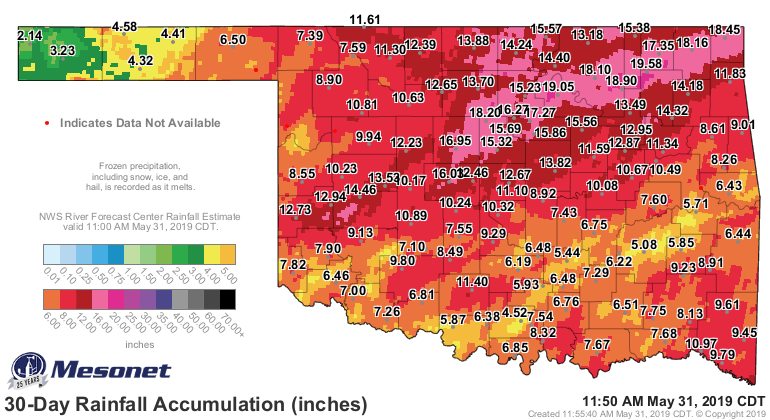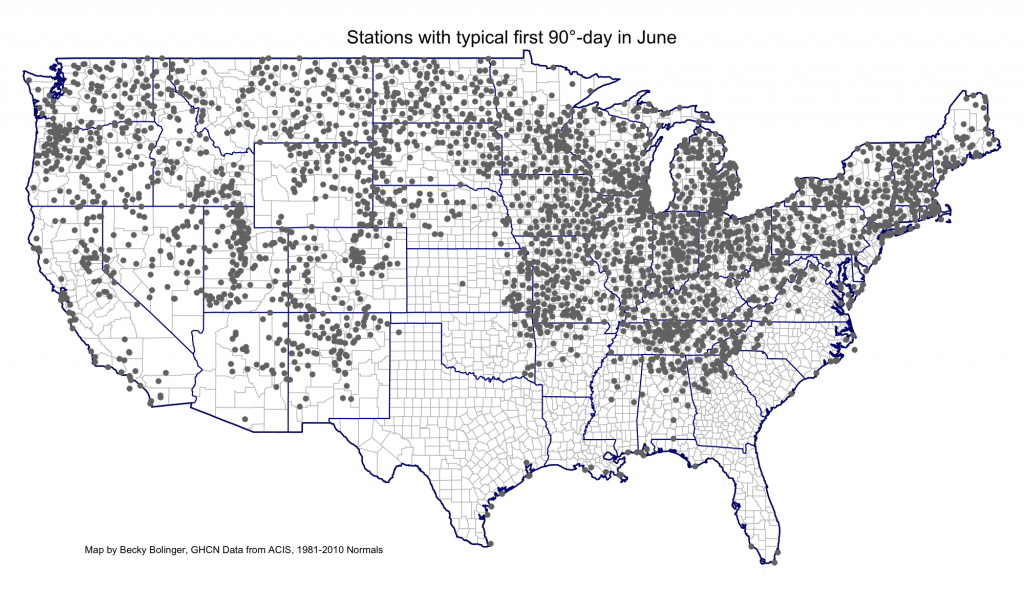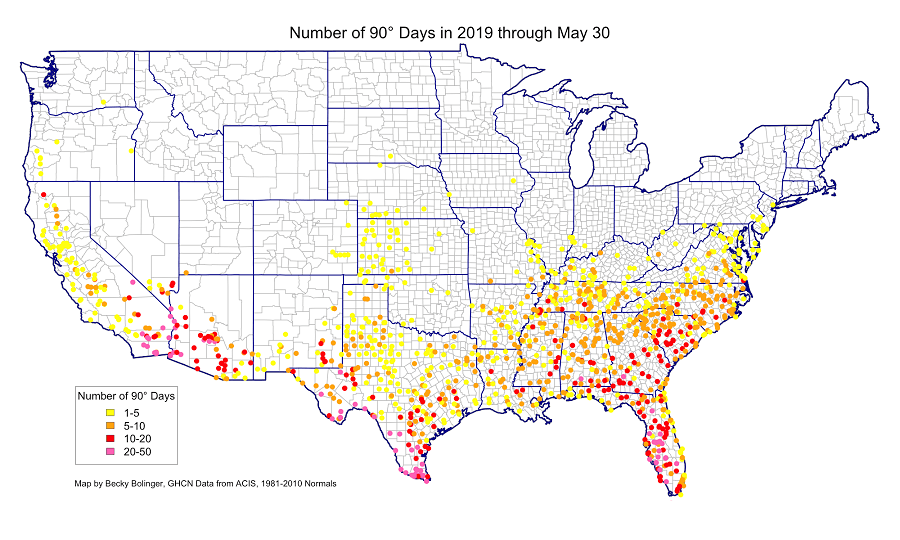
Keep updated on the latest weather trends and outlooks with your personal daily weather planner—delivered each day via email. To subscribe to this free service, click here.
By the N#mbers, for 5-31-19: Flooding Likely to Continue, Midwest Could Get a Break
20% increase in two-weeks
The percentage increase in corn futures from early May and to present. Futures have been trading between $3.50 to $4 per bushel for several years, however, flooding in the Corn Belt has raised concerns about poor yields and lost corn acres. December corn futures have gone from $3.72 in early May to $4.35 as of May 29. [Capital Press]
28 head
“I’ve stayed awake at night worrying about them cows down there because I knew some of them were still alive, and there was no way to get them.” Larry Washom, a rancher in Oklahoma, discussing the 28 head of cattle he lost in the recent Oklahoma flooding. We feel for you Mr. Washom. Parts of central and northeast Oklahoma have received close to 20” of rainfall over the last 30-days. The 30-Day Rainfall Accumulation map from the Oklahoma Mesonet tells the story. [quote from News on 6 in Tulsa, OK]

7-day rainfall forecast: good news and bad news
The persistent Southwest jet stream that produced the widespread severe weather and heavy rain is finally shifting. This shift in the jet stream should help reduce rainfall over the Upper Mississippi — at least over the next week, which should help the major flooding in the Mississippi, the Lower Missouri, and Arkansas River Basins. Parts of Texas, Oklahoma, Kansas, Arkansas, and Louisiana, however, could continue to receive very heavy rain and a high risk for flooding. Models are showing the focus for the heaviest rain over the next week could persist over the South-Central U.S.
90-degree days… an interesting number
The impending heat of summer means the start of 90-degree days for some; for others like Texas and Oklahoma and parts of the Southeast, it’s the continuation of the heat that’s already started. Although June 21 is considered by many to be the start of summer (with the occurrence of the summer solstice), meteorologists and climatologists consider the beginning of June to be the beginning of summer. Why is that you might be asking
Well, the first of June is when you start seeing those 90-degree days start to pop up across the country. Why is that important? 90-degrees is a pretty important metric for determining how “hot” a location is. At 90-degrees, you can start seeing things like heat-stress to vegetation, people and animals.
If you would like to see how this works out and for who, we have provided a couple of maps. One that shows the places that first see 90-degree days in June and those that get to enjoy hot temperatures before everyone else. You probably can guess where they are. There is a pretty nice line around Interstate-10 from southern California all the way to Florida, showing the many places that have observed more than ten 90-degree days. Some of these hot days have even extended north into the High Plains and the Midwest.
While this is very exciting for us here at Livestock Wx to think about, there is probably a fine line between painful elaboration of the obvious and interesting weather and climate stats. Sometimes we might cross that line J. If you would like to read more about 90-degree days we go into a bit more detail on the topic at Livestock Wx.


